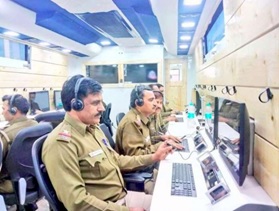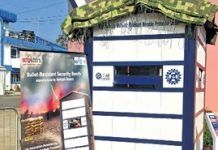The Delhi Police will soon move to a more efficient internal communication system, aimed at faster exchange of information and bigger networks. The force is set to design, install and supply the ‘Open Standard Digital Trunking Radio System’ (OS-DTRS) and will phase out the current tetranet wireless network services. The project will cost close to Rs 100 crore, tenders for which were issued on December 2.
The trunking system provides multiple channels and common groups for policemen. This way, they are communicating with more personnel using fewer groups, officials said. Groups are formed based on geographical area and function. It will also have a voice logger system, which can be used to describe a crime scene, interrogation details and evidence. The logs are saved in the system.
The project’s master site will be at the Delhi Police HQ. Police are looking for private companies to run the system on 800 MHz frequency band and microwave links. “There will be a tower that can withstand wind speeds of up to 160 kmph. Around 15,000 concurrent radio sets will be made first and later expanded to 30,000 over time,” said an officer.
As per documents released by police, the master site will have OS-DTRS control and switching equipment, a network management system, 90 IP-based logger systems, 50-inch or bigger LED monitors, an antenna system and maintenance systems. Equipment and services are expected to run for at least 10 years and fix network issues faced by personnel on the ground.
The documents read: “The system should be equipped to support multi-channel operation for meeting current traffic requirements and should be expandable by 100% in future… The number of frequency spots required for meeting 15,000 radios operation as per traffic norms… should be projected.”
The system will have talk groups, in which members have the same functions/role, and each radio system will have a unique ID. “The system should support at least 250 talk groups, with the capability to expand… number of unique individual radio IDs…The signalling language will permit the system to assign not less than 15,000 unique individual radio IDs (Identification), with the capability to expand to 30,000,” reads the document








